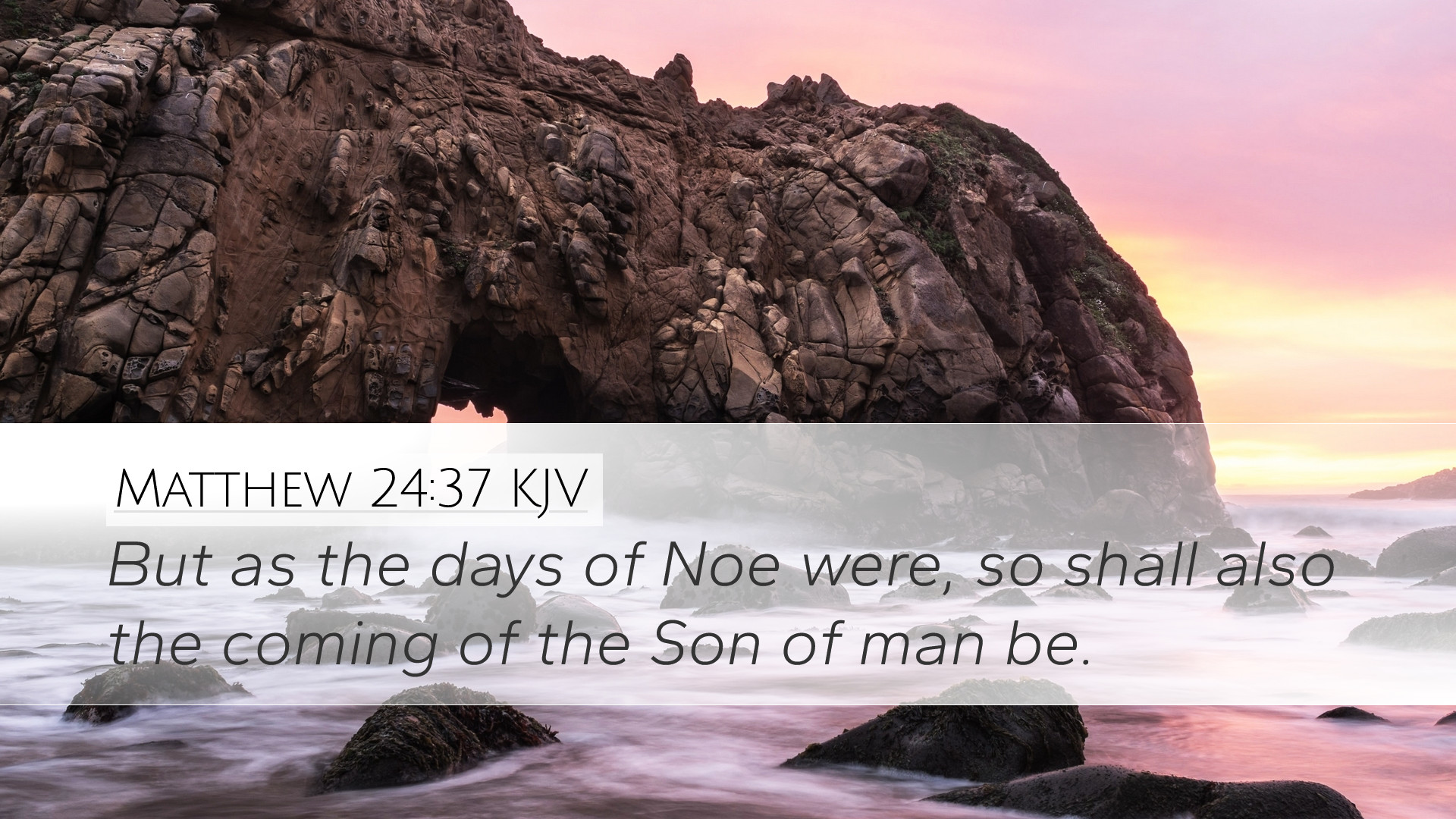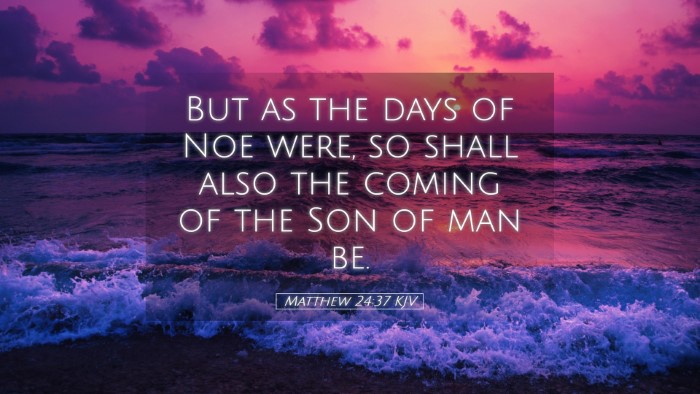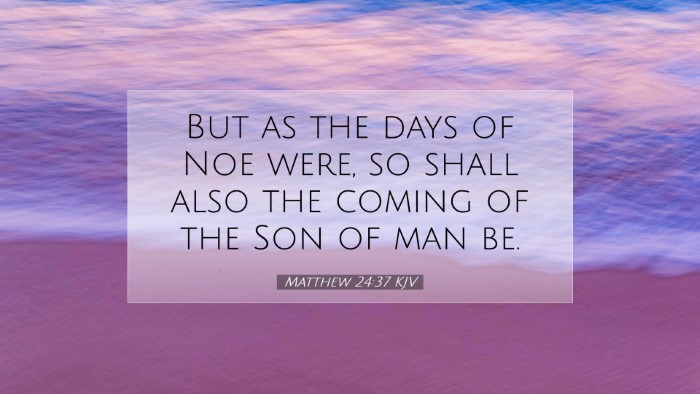Commentary on Matthew 24:37
Matthew 24:37 states, "But as the days of Noah were, so shall also the coming of the Son of man be." This verse draws a profound parallel between the days of Noah and the anticipated return of Jesus Christ. Through various public domain commentaries, we explore the meaning and implications of this statement, providing insights valuable for pastors, theologians, and serious students of the Bible.
Contextual Overview
In this chapter, Jesus is addressing his disciples about the signs of the end times. Matthew 24 is a pivotal text in eschatological studies, and verse 37 serves as a significant reference to the historical context of Noah's flood. Understanding this verse requires familiarity with both the immediate and broader biblical contexts.
Insights from Matthew Henry
Matthew Henry emphasizes that Jesus used the days of Noah as a typological reference for the indifference and moral depravity of society before the flood. Henry notes that during Noah's time, societal norms were characterized by corruption, violence, and a disregard for divine warning. People indulged in their pleasures, ignoring the impending judgment that Noah diligently preached.
Key Points from Henry:
-
The comparison serves as a stark warning against the complacency of mankind. Just as in Noah's time, people will be caught unawares by the coming of the Son of man.
-
An emphasis on the need for vigilance; believers are admonished to remain steadfast in faith and watchful for the signs of His return.
-
An assurance that God's judgment, though delayed, is certain. The days of Noah illustrate both God's mercy in providing a means of escape through Noah and His justice in executing judgment upon the wicked.
Reflections from Albert Barnes
Albert Barnes approaches the text with a focus on the social and spiritual conditions of Noah's day. He argues that the reference to Noah underscores the reality of divine judgment in a world blind to its spiritual peril. Barnes asserts that Jesus’ comparison highlights the similarities in the moral climate—the rampant sinfulness and refusal to heed God's warnings.
Insights from Barnes:
-
The sinful behaviors of Noah's contemporaries mirror today's society's apathy towards spiritual matters and moral degradation.
-
Barnes points out the importance of examining our lives in light of this analogy, encouraging self-reflection and repentance.
-
The notion of suddenness in God's judgment serves to reinforce the urgency for conversion and faithfulness in one’s walk with God.
Analysis from Adam Clarke
Adam Clarke offers a comprehensive analysis of the verse, noting its implications for theological and eschatological understanding. Clarke emphasizes that the flood was a tangible reality, one that serves as a precedent for the ultimate return of Christ. He highlights the contrast between judgment and salvation represented by Noah and the Ark.
Clarke's Key Thoughts:
-
The days of Noah illustrate the unpreparedness of humanity for the return of Christ, and Clarke stresses the need for believers to remain vigilant.
-
He reflects on God's grace shown through Noah, suggesting that even in the midst of judgment, there is provision for salvation—a message of hope amid dire warnings.
-
Clarke concludes with a call to live righteously and with a keen awareness of the signs of the times, encouraging those who would heed the prophetic words of Christ.
Theological Implications
The theological implications of Matthew 24:37 are profound. The verse not only serves as a historical reference but also as a reflection of God's character—His justice and mercy. The days of Noah encapsulate the eternal principles of:
-
The Justice of God: The flood serves as a testament to God's judgment against sin. It reinforces the idea that God is not passive concerning evil and will ultimately bring about reconciliation and justice.
-
The Mercy of God: God provides a way of escape through the Ark, symbolizing Christ’s redemptive work. This highlights the hope present even in judgment—a recurring theme throughout scripture.
-
Human Complacency: The societal disregard for divine warning serves as a mirror for contemporary Christian experience, urging today’s believers to discern the signs of the times and remain faithful.
Conclusion
In summary, Matthew 24:37 serves as a profound reminder for Christians throughout the ages. The parallel drawn between the days of Noah and the coming of the Son of man paints a vivid picture of human nature in relation to divine expectation. Through combining insights from Matthew Henry, Albert Barnes, and Adam Clarke, we are reminded to maintain vigilance, embrace righteousness, live in the hope of salvation, and prepare for Christ’s imminent return.
As we reflect on this verse, let us not be like those who were oblivious to the flood but instead be actively engaged in our faith and committed to the mission of Christ until He returns.


